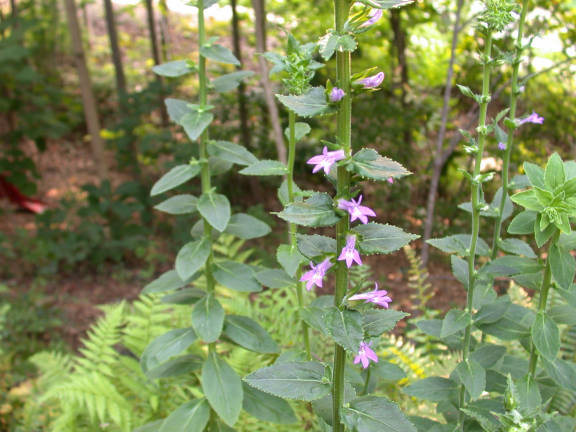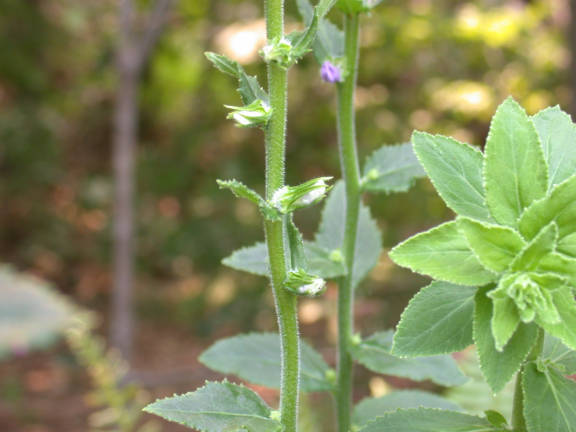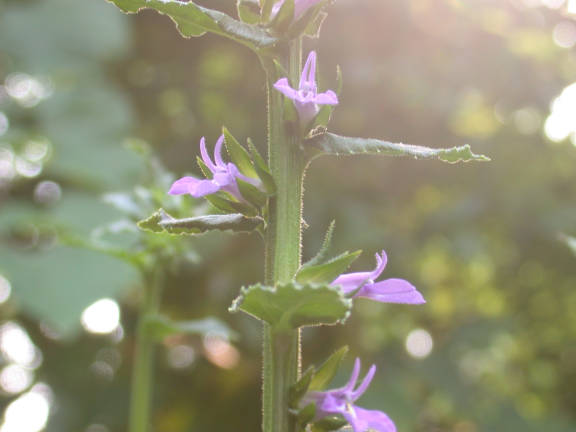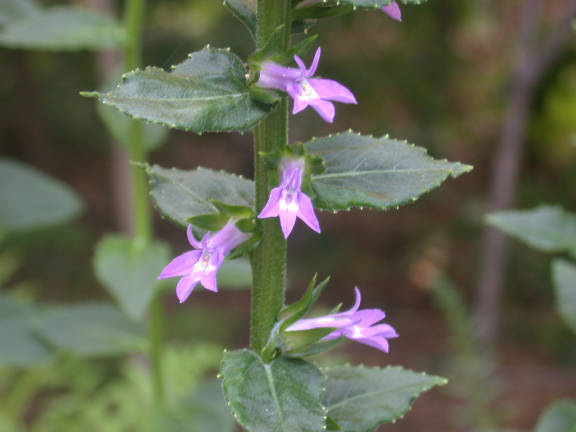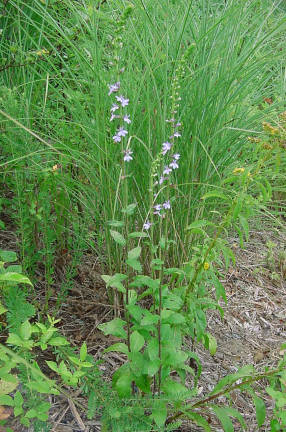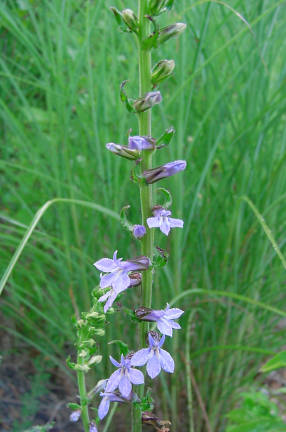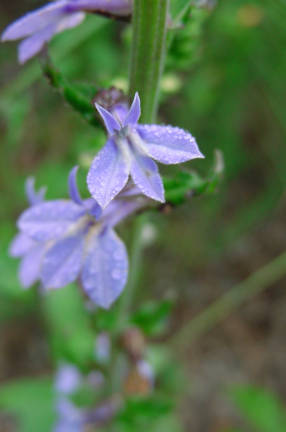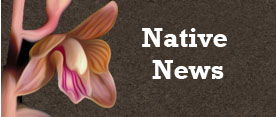NC Native Plant Society:
Plant Details
Lobelia puberula [=Lobelia puberula var. puberula]
Downy Lobelia
Scientific Name: |
Lobelia puberula [=Lobelia puberula var. puberula] |
|---|---|
Genus: |
Lobelia |
Species Epithet: |
puberula |
Common Name: |
Downy Lobelia |
Plant Type |
Herb/Wildflower |
Life Cycle |
Perennial |
Plant Family |
Campanulaceae (Bellflower Family) |
Native/Alien: |
NC Native |
Size: |
1-3 ft., 3-6 ft. |
Bloom Color(s): |
Blue |
Light: |
Sun - 6 or more hours of sun per day, Part Shade - 2 to 6 hours of sun per day |
Soil Moisture: |
Dry, Moist |
Bloom Time: |
July, August, September, October |
Growing Area: |
Mountains, Piedmont, Sandhills, Coastal Plain |
Habitat Description: |
Forests, openings (Weakley 2015). Common throughout NC. |
Leaf Arrangement: |
Alternate |
Leaf Retention: |
Deciduous |
Leaf Type: |
Leaves veined, not needle-like or scale-like |
Leaf Form: |
Simple |
Life Cycle: |
Perennial |
Wildlife Value: |
Has some wildlife value |
Landscape Value: |
Suitable for home landscapes |
State Rank: |
S5: Secure (*Key) |
Global Rank: |
G5 - Secure (*Key) |
Notes: |
Items of note are that the blooms have one white mark (vs. two on Great Blue Lobelia), and the flowers seem be on one side; the plant is densely hairy. |
|
Buds and Blooms These plants were found in a fairly dry sewer easement, although it did puddle up in the tractor ruts.
Raleigh-Durham area |
|
|
Closeup of Stem with Buds
Raleigh-Durham area |
|
|
Closeup of Stem with Blooms
Raleigh-Durham area |
|
|
Closeup of Blooms
Raleigh-Durham area |
|
|
Blooming Plants
Black Mountain, late August |
|
|
Buds and Blooms
Black Mountain, late August |
|
|
Closeup of Blooms
Black Mountain, late August |
|
Links: |
|
back to top
go to plant details search
go to plant images search
go to gallery home
back to Initial l Gallery
back to orchids
back to Carnivorous Plants
back to Trilliums

